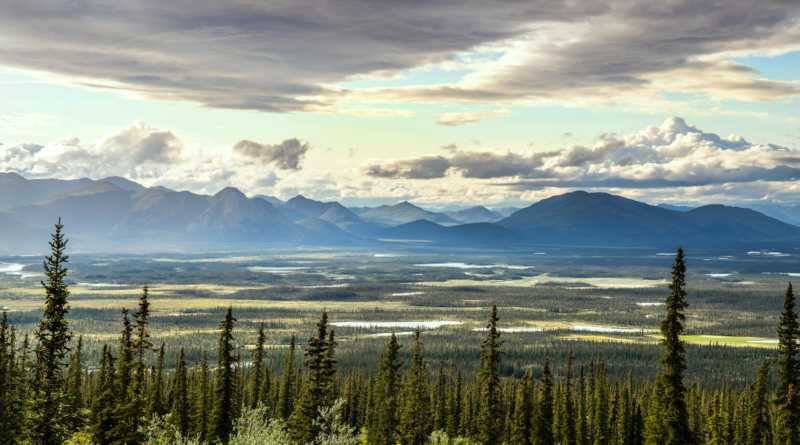INTERVIEW: New documentary examines the contentious debate over public lands
Photo: Public Trust focuses on three protected areas, including the Arctic National Wildlife Refuge. Photo courtesy of Kahlil Hudson / Provided by press rep with permission.
Public Trust, the new documentary from filmmaker David Garrett Byars, explores the stories of three public lands in the United States, each facing an uncertain future and embroiled in a contentious debate between private usage and preservation. The film, which is now available for free online, focuses its lens on the Arctic National Wildlife Refuge in Alaska, the Boundary Waters in Minnesota and Bear Ears National Monument in Utah.
Throughout the stunning 95-minute feature, Byars explores the natural wonders of each place, but also the legal in-fighting that has occurred amongst individuals, corporations and communities in these protected areas. This is a topic he knows well; his last documentary film was No Man’s Land, which looked at an armed occupation of the Malheur National Wildlife Refuge, sometimes known as the “Bundy standoff.” This new film is much larger in scope, and that presented challenges to Byars.
“It was definitely a beast to distill down into something somewhat legible in 90 minutes or so,” the director said in a recent phone interview. “The inception story of No Man’s Land and the inception story of Public Trust are kind of the same. They both kind of leapt from this moment in 2016. There was this protest in southern Utah where these right-wing activists drove down a dirt road that the Bureau of Land Management had closed to off-road usage, citing protection of these ancient Pueblo and archaeological sites. That to me was kind of fascinating.”
Byars started focusing his professional career on following these public land stories, and he became engaged with each new wrinkle. There was a larger anti-federal-land-management sentiment, and then there were the interests of environmentalists, Native American tribes and the public at large. Eventually the militia movement and rancher-activists became involved as well. In many ways, these debates and fights typify some of the struggles of the West, both historically and in the present day.
“I really wanted to explore public lands as a topic rather than having it be something that’s adjacent to another story,” he said. “Then I met Jeremy Rubingh, who ended up becoming the producer on the film. He’s been immersed in public lands since he was a child and has worked his entire adult career in public lands in different capacities, and so we kind of started talking about it. And it became clear … there was a roadmap to make this film. There were things that were going on that we could talk about.”
Byars and Rubingh eventually teamed up with Patagonia Films, a powerful partner to have, and Public Trust started to take shape.
“As long as there’s some giant asset that isn’t being exploited primarily for profit or isn’t being completely exploited, there’s going to be cross-hairs on that,” Byars said. “When you have something as valuable as 640 million acres of public lands that belongs to everyone, those who have the power to do so will lean on the levers of decision-making to get that asset to work for them for profit. That’s always been true throughout the history of humanity and more recently in America, from the rubber barons down on through the ages to today.”
To tell this national story within 95 minutes, the team focused on these three areas, mostly because they represented different geographies but also because they are frequently in the news. By selecting Utah, Alaska and Minnesota, Byars was essentially respecting the breadth of public lands and not stating that this is one area’s problem.
“So we have Bear Ears, which is very desert-y,” he said. “We have the Arctic National Wildlife Refuge, which is, as we say in the film, America’s Serengeti and is just one of the last wild places on the planet and last large-functioning ecosystem in the world. Then we have the Boundary Waters, which is in Minnesota, which is not what you typically think of when you think of America’s public lands. It’s one of the most visited wilderness areas in the United States of America. It’s very accessible and very fun to go to, so that was one thing we wanted to do was do justice to the breadth of the public lands experience. But then also we needed current conflicts. There were things happening around these areas in terms of movement on policy and the disposition of those lands and what was happening to them. That gave us some narrative heft and movement in the film.”
That narrative heft has now sparked a national conversation, and viewers look like they want to keep the conversation going.
By John Soltes / Publisher / John@HollywoodSoapbox.com
Public Trust, directed by David Garrett Byars, is currently available for free online from Patagonia Films. Click here for more information. Below viewers can watch the film.

